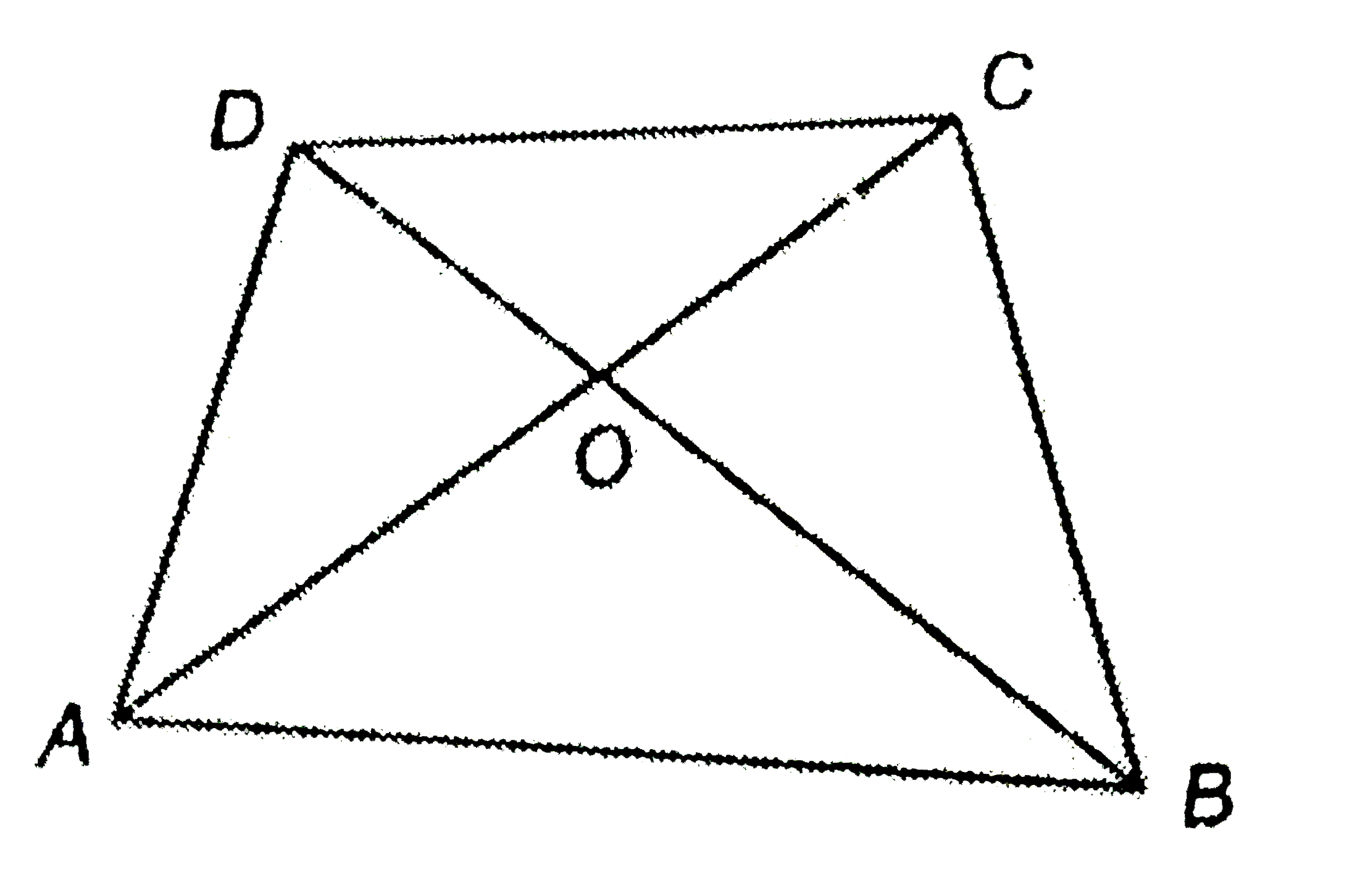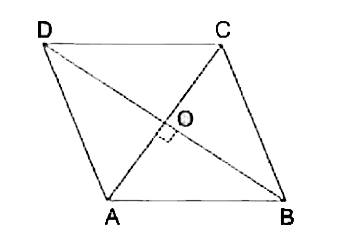In a parallelogram ABCD diagonals AC and BD intersect at O and AC = 7.4 cm and BD = 6.2 cm. Find the length of AO and BO.
The correct Answer is:3.7 cm, 3.1 cm
To solve the problem, we need to find the lengths of AO and BO in the parallelogram ABCD, where the diagonals AC and BD intersect at point O. Given that AC = 7.4 cm and BD = 6.2 cm, we can follow these steps:
Step 1: Understand the properties of the diagonals in a parallelogram
In a parallelogram, the diagonals bisect each other. This means that the point of intersection (O) divides each diagonal into two equal parts.
Step 2: Set up the equations for the diagonals
Since O is the midpoint of AC, we can express the lengths as:
- AO + OC = AC
- AO = OC (since O is the midpoint)
Similarly, for diagonal BD:
- BO + OD = BD
- BO = OD (since O is the midpoint)
Step 3: Substitute the known values into the equations
From the problem, we know:
- AC = 7.4 cm
- BD = 6.2 cm
Using the first diagonal:
- AO + OC = 7.4 cm
Since AO = OC, we can write:
- AO + AO = 7.4 cm
- 2AO = 7.4 cm
Step 4: Solve for AO
Now, divide both sides by 2:
- AO = 7.4 cm / 2
- AO = 3.7 cm
Step 5: Use the second diagonal to find BO
Now, using the second diagonal:
- BO + OD = 6.2 cm
Since BO = OD, we can write:
- BO + BO = 6.2 cm
- 2BO = 6.2 cm
Step 6: Solve for BO
Now, divide both sides by 2:
- BO = 6.2 cm / 2
- BO = 3.1 cm
Final Answer
Thus, the lengths are:
- AO = 3.7 cm
- BO = 3.1 cm
In a parallelogram, the diagonals bisect each other. This means that the point of intersection (O) divides each diagonal into two equal parts.
Since O is the midpoint of AC, we can express the lengths as:
- AO + OC = AC
- AO = OC (since O is the midpoint)
- BO + OD = BD
- BO = OD (since O is the midpoint)
From the problem, we know:
- AC = 7.4 cm
- BD = 6.2 cm
- AO + OC = 7.4 cm
Since AO = OC, we can write:
- AO + AO = 7.4 cm
- 2AO = 7.4 cm
Now, divide both sides by 2:
- AO = 7.4 cm / 2
- AO = 3.7 cm
Now, using the second diagonal:
- BO + OD = 6.2 cm
Since BO = OD, we can write:
- BO + BO = 6.2 cm
- 2BO = 6.2 cm
Now, divide both sides by 2:
- BO = 6.2 cm / 2
- BO = 3.1 cm
Thus, the lengths are:
- AO = 3.7 cm
- BO = 3.1 cm
Topper's Solved these Questions
- BOOK - CBSE COMPLEMENTARY MATERIALCHAPTER - QUARILATERAL EXERCISE - Part - C10videos
QUARILATERAL
- BOOK - CBSE COMPLEMENTARY MATERIALCHAPTER - QUARILATERAL EXERCISE - Part - D5videos
QUARILATERAL
- BOOK - CBSE COMPLEMENTARY MATERIALCHAPTER - QUARILATERAL EXERCISE - PART-A( True (T) and False (F))6videos
QUARILATERAL
- BOOK - CBSE COMPLEMENTARY MATERIALCHAPTER - PROBABILITY MIND MAPEXERCISE - PRACTICE TEST6videos
PROBABILITY MIND MAP
- BOOK - CBSE COMPLEMENTARY MATERIALCHAPTER - STATISTICSEXERCISE - PRACTICE TEST5videos
STATISTICS
Similar Questions
Knowledge Check
- Question 1 - Select One
Diagonals AC and BD of a parallelogram ABCD intersect at O. If OA = 3 cm and OD = 2 cm, determine the lengths of AC and BD.
AAC=6cm,BD=2cmBAC=6cm,BD=4cmCAC=3cm,BD=4cmDAC=3cm,BD=3cm - Question 2 - Select One
ABCD is a parallelogram in which diagonals AC and BD intereset at O. If E, F, G and H are the mid points of AO, DO, CO and BO respectively, then the ratio of the perimeter of the quadrilateral EFGH to the perimeter of parallelogram ABCD is:
A1:4B2:3C1:2D1:3 - Question 3 - Select One
ABCD is a parallelogram in which diagonals AC and BD intereset at O. If E, F, G and H are the mid points of AO, DO, CO and BO respectively, then the ratio of the perimeter of the quadrilateral EFGH to the perimeter of parallelogram ABCD is:
A0.042361111111111B0.043055555555556C0.04375D0.044444444444444
In a rectangle ABCD, diagonal AC and BD intersect each other at 0.If AB=32 cm and AD = 24 cm, find the length of OD.
View SolutionDiagonals AC and BD of a parallelogram ABCD intersect each other at O. If OA= 3 cm and OD = 2 cm, determine the lengths of AC and BD.
View SolutionABCD is a rectangle. The diagonals AC and BD intersect at O. If AB = 32 cm and AD = 24 cm, then what is OD equal to ?
View SolutionIf ABCD is a quadrilateral whose diagonals AC and BD intersect at O, then
 View Solution
View SolutionIn the adjacent figure , ABCD is a rhombus whose diagonals AC and BD intersect at a point O. If side AB=10 cm and diagonal BD=16 cm , find the length of diagonal AC.
 View Solution
View Solution

